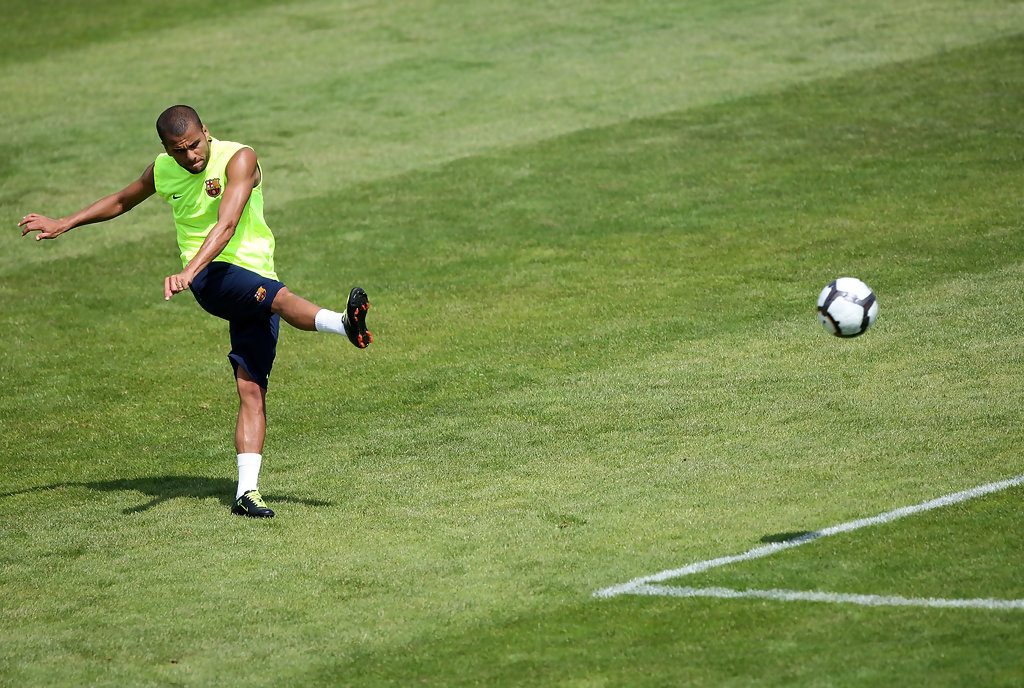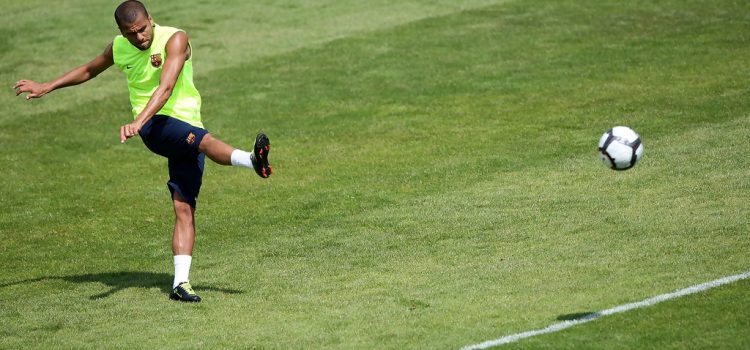
Here’s how Americans will develop a fresh, new brand of pure super-Soccer — where 15-20% or more of their game touches, at all age groups and levels, right on up to the pros and national teams, will be a fluid weave of one-touch, productive passes — not seen since the heydays of Dutch Total Soccer of the 70s and the Hungarian Golden Age of Football of the 50s.
It’s even akin to the selfless brand of team-first basketball that the New York Knickerbockers of the early 70s displayed with their endless ‘poetry in motion’, give-and-go style of play, for those who know the sport and go back that far.
Be more selective
What American players, and especially coaches, need to do is watch Football with a more selective eye, and not automatically replicate the staccato, retention-addled Kickball, Power Kickball and Football brands that the rest of the footballing world plays (see article https://t.co/VCCNY5djfa).
And the good news for Americans is that they don’t necessarily have to.
They are not bound by other Football cultures where kids grow up emulating the skills and stop-and-go play of their idols. Americans are simply better positioned to develop their own World-Class brand because they are primed disrupt the paradigm that is traditional, staccato Football, Kickball or Power Kickball that the rest of the world plays upwards of 95% of the time.
Americans can break the mold and more easily develop a 15%+ one-touch flow of super-Soccer by consciously accepting and dedicating itself to this higher brand and art-form.
It starts with players and coaches paring back spending too much time developing shooting skills, plus shrinking their love affair with the glory of scoring goals.
Don’t shoot! More specifically, don’t waste too much time on that skill during practice.
Focus on the daisy-cutters
And while they’re at it, they shouldn’t spend so much time on dribbling or passing with any other part of the foot other than mastering the accurate delivery of solid, square-ankle, easily to-control, daisy-cutters … especially the one-touch variety. Hand-in-hand with concentrating on this skill are triangulating and ‘moving to open space to receive passes’ drills, along with trapping skills.
But for goodness sake, stop the excessive shooting practice. It’s largely a wasted training activity in most instances since, at best, during a game, only a few players on a team will get a chance to shoot, and even then, at most they’ll only get a rare shooting opportunity.
On the flip side, all players will get multiple opportunities during a game to pass the ball, and are compelled to do so as accurately as possible — so logic dictates that passing is the much greater skill that needs development and emphasis during practice, especially at the younger age and novice group levels.
Excellent passing abilities will get a player to develop much quicker than any other skill, especially shooting.
While we’re at it, a practice that does not emphasize an excellent daisy-cutter as the primary ball-control skill, preferably as a one-touch passing activity, which demands proper, continual Soccer movement, is probably inadvertently spending way too much time reinforcing lower grade Kickball.
In other words, they’re probably going a bit backwards and further ingraining anti-Soccer … mindlessly running up and down the field with choppy displays that frustrate teammates and keeps them walking or stagnant on the pitch, rather than anticipating and running to openings to receive gorgeous and productive daisy-cutters.
Basic drills like shooting should be curtailed
Yes … soccer practices which are comprised of lots of playing without emphasizing and fine-tuning one-touch daisy-cutter passing techniques is largely counter-productive, as is shooting, or passing with any other part of the foot bedsides the solid, squared-ankle.
Now before anyone starts considering this premise as heresy, let me be clear.
I am not suggesting that you do not practice shooting, dribbling or other forms of footwork passing styles. What I am saying is that it should be curtailed as a priority, way down the line after first emphasizing and spending more time during practice perfecting daisy-cutting, and related open passing lane movements, along with trapping control drills.
Furthermore, a training session should always include playing a game, when there are enough players (four or more).
Even with the wasted opportunity of not emphasizing proper passing, a game still provides the necessary backdrop to develop the required individual and team instincts that all players must build upon, so yes … there still is value in playing regardless if it is devoid of daisy-cutter emphasis.
It’s just that the game should be a rehearsal of primarily weaving one-touch passing schemes, as much as possible (and coaches shouldn’t be afraid to demand that over 20% of the play be daisy-cutters), with the accompanying, productive triangular passing lane movements, while steering away from shooting or dribbling that only serves to reinforce anti-Soccer.
Must master the basics of passing excellence
Just like an architect doesn’t start doing renderings until he/she learns the basics that includes math, Soccer players shouldn’t be practicing too much shooting until they work towards mastering the basics of passing excellence.
And because Americans are not immersed in watching the obligatory, always-choppy, dribble-happy, stop-and-go model that dominates play in all other countries, they have an advantage when it comes to emerging as the producers of the next brand of super-Soccer.
This is the essence of pure Soccer — more precisely, the road map to pure American World-Class Soccer.
Written by Ray Lindenberg
Follow Ray on Twitter @ProPrepSoccer
Like O-Posts on Facebook
You can also follow O-Posts on Twitter @OPosts

